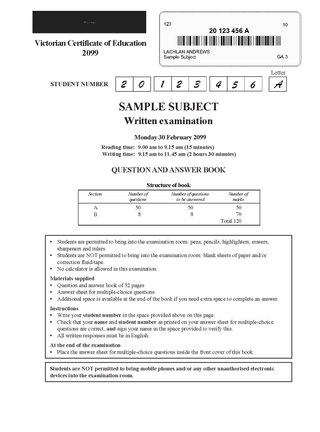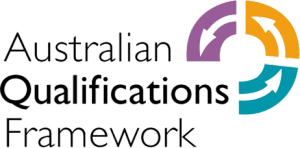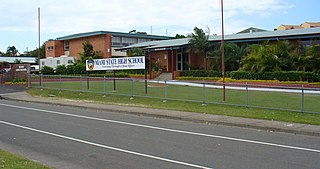Education in Australia encompasses the sectors of early childhood education (preschool) and primary education, followed by secondary education, and finally tertiary education, which includes higher education and vocational education. Regulation and funding of education is primarily the responsibility of the States and territories; however, the Australian Government also plays a funding role.
The Higher School Certificate (HSC) is the credential awarded to secondary school students who successfully complete senior high school level studies in New South Wales and some ACT schools in Australia, as well as some international schools in Singapore, Malaysia, Indonesia, China, Papua New Guinea and Tonga. It was first introduced in 1967, with the last major revision coming into effect in 2019. It is currently developed and managed by the NSW Education Standards Authority (NESA).

The Victorian Certificate of Education is one credential available to secondary school students who successfully complete year 11 and 12 in the Australian state of Victoria as well as in some international schools in China, Malaysia, Philippines, Timor-Leste, and Vietnam.
The South Australian Certificate of Education (SACE) is awarded to students who have successfully completed their senior secondary schooling in the state of South Australia.
The Universities Admission Index (UAI) was used in New South Wales and the Australian Capital Territory, Australia, as the primary criterion for entry into most undergraduate-entry university programs. It was a number between 0 and 100, occurring in increments of 0.05 and indicating the rounded percentile rank of a student who undertook the Higher School Certificate or ACT Year 12 Certificate with a valid quantity and combination of units of study. It was replaced in N.S.W with the Australian Tertiary Admission Rank (ATAR) in 2009. Prior to the UAI the ACT used its own Tertiary Entrance Rank

The Australian Qualifications Framework (AQF) specifies the standards for educational qualifications in Australia. It is administered nationally by the Australian Government's Department of Industry, with oversight from the States and Territories, through the Standing Council of Tertiary Education Skills and Employment. While the AQF specifies the standards, education and training organisations are authorised by accrediting authorities to issue a qualification.

The Victorian Tertiary Admissions Centre (VTAC) is the administrative body that processes tertiary course applications for universities in the state of Victoria, Australia. Incorporated in 1967, it has offices located at South Melbourne, Victoria, Australia. It is a member of the Australasian Conference of Tertiary Admission Centres (ACTAC).
The Overall Position (OP) was a tertiary entrance rank used in Queensland, Australia to guide selection into universities. Like similar systems used throughout the rest of Australia, the OP shows how well a student has performed in their senior secondary studies compared with all other OP-eligible students in Queensland. The system was introduced in 1992 and ended with the 2019 cohort.

Narrabundah College is a government college that teaches the last two years of secondary education in the Australian Capital Territory (ACT). It was the first school in Australia to offer the International Baccalaureate (IB), starting the programme in February 1978.
The Western Australian Certificate of Education (WACE) is the credential awarded to students who have completed senior secondary education in the state of Western Australia. It is the Western Australian graduation certificate of the Australian Senior Secondary Certificate of Education. Students are required to meet various breadth and depth requirements, achievement standards and literacy and numeracy standards across their final years of schooling. As of the 2020 WACE, there are 106 courses available for students to study. Many WACE students are awarded an Australian Tertiary Admission Rank (ATAR), summarising their results across all areas of study into one ranking for the purposes of university admission. Students may choose from ATAR courses, which count directly towards their ATAR, Vocational Education and Training courses, which are more practical courses and can lead to further vocational opportunities, and, from 2021, General courses, which provide pathways to university, employment, or further vocational education and training. From 2010, the WACE replaced the Tertiary Entrance Exam (TEE), as the standard academic examination for school leavers in Western Australia.
Mathematics education in Australia varies significantly between states, especially at the upper secondary level. While every school offers a state-based education systems, some may also offer the International Baccalaureate program.

Nerang State High School (NSHS) is a state high school located in Nerang, a suburb on the Gold Coast.

Miami State High School is a school in the suburb of Miami established as "South Coast District State High School" in 1963. It is currently the Gold Coast's second oldest state school, second in age only to Southport State High School.

Education in Western Australia consists of public and private schools in the state of Western Australia, including public and private universities and TAFE colleges. Public school education is supervised by the Department of Education, which forms part of the Government of Western Australia. The School Curriculum and Standards Authority is an independent statutory authority responsible for developing a curriculum and associated standards in all schools, and for ensuring standards of student achievement, and for the assessment and certification according to those standards.
Benowa State High School (BSHS) is a state, co-educational school, founded in 1980, in the suburb of Benowa in the Gold Coast. The school is located in the land of the Kombumerri people, within the wider Bujalung language nation, recognising Ngarahngwal and Yugambeh. It is the only state high school in the state electorate of Surfers Paradise.

Varsity College is a primary and secondary school in Varsity Lakes.

The Australian Tertiary Admission Rank (ATAR) for all domestic students, or the ATAR-based Combined Rank (CR) for all International Baccalaureate (IB) students, are the primary criteria for determining the Selection Rank (SR) for admission into undergraduate courses in Australian public universities. Domestic Students are students who are Australian or New Zealand citizens, or Australian permanent residents, or the holder of long-term refugee visa. ATAR & CR are not applicable for international students as they must apply directly to each university separately and their SR is calculated by the university. The ATAR is calculated by each state or territory's own state-level Tertiary Admission Center (TAC) for all domestic students studying within their geographical limits. Interstate Domestic Students must apply to the TAC of their respective state. The Selection Rank is calculated by each University separately based on the ATAR or CR as well as additional points for each university's unique criteria such as a student's educational disadvantage or subject performance. ATAR is not a mark, but rather a percentile ranking between 0.00 and 99.95 which shows the student’s relative position compared to all other students in the range of 16 to 20 years old who would have completed their respective year 12 exams in that state in a year.
The Queensland Certificate of Education (QCE) is the certificate awarded to students completing their secondary schooling in Queensland. The QCE was introduced in 2008, to replace the Senior Certificate. It is currently issued by the Queensland Curriculum and Assessment Authority (QCAA).

St James Lutheran College is an independent, co-educational Kindergarten to Year 12 Lutheran College under the Lutheran Church of Australia. The school is located in Urraween, a suburb of Hervey Bay, South East Queensland, Australia. St James Lutheran College currently caters for approximately 800 students, after opening in 2003 as one of the newest Christian schools on the Fraser Coast.
Lowood State High School is a state high school located in Lowood, Queensland, Australia.









